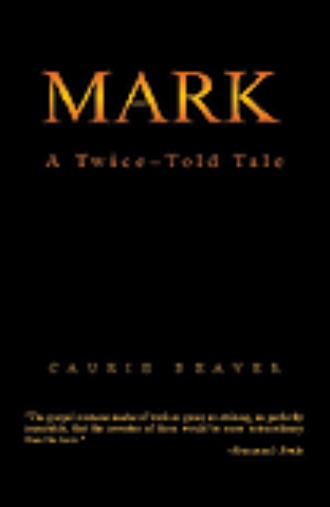Mark
A Twice Told Tale
by
Book Details
About the Book
MARK: A Twice Told Tale This is a historical and literary study of Mark’s account of Jesus’ life and passion. Regardless of whether we approve or disapprove, Mel Gibson’s’ move, The Passion, has once again demonstrated the power of story telling. In it he brought to life the history of the iconography of Jesus’ passion. By setting in motion the images of Christian art with which we are all familiar, he told a compelling story replete with hints of a medieval crucifix, Michael Angelo’s Pieta and the Shroud of Turin. There is no inconsistency in this as Roman Catholics and some Protestants accept tradition as well as the biblical account. However, against all probability he has both Jesus and Pilate speaking Latin. Of course, the gospel of John does no better when it has both speaking Greek. Although Jesus may have spoken some Greek, it is less probable that Pilate did. At least to my knowledge no one has made such a claim for him.
The case of Jesus is different. While it is true that Gustaf Dalman demonstrated that the everyday language of the Jews at that time was Aramaic, many of them also spoke and wrote Greek. Since Jesus’ ancestors were surrounded by the Greek language for over 300 years since their conquest, by Alexander the Great in the fourth century B.C.E., it would not be surprising to discover that Jesus was bilingual. His situation may be compared to that of an American Indian whose forefathers have been surrounded by English for over 300 years. He will sometimes speak English or Spanish as well as his native tongue. The Gospel of Mark itself illustrates Jesus’ bilingual environment as it is a work about a Jewish prophet written in Greek language.
Since Mark, as the earliest gospel, it the fountainhead of the gospel tradition, its study should reveal something about how the story began and developed. To understand the life of Jesus or the Gospel of Mark one must be familiar with what has been written in the past on these subjects. Both Albert Schweitzer’s Quest of the Historical Jesus and James M. Robinson’s New Quest of the Historical Jesus are well grounded in the history of research. Therefore, Chapter I of my book is review of their contributions to that history with special attention to the problem of periodization. In Chapter II I deal with Mark’s view of Jesus’ family. Much has been written recently about James, the brother of Jesus, but Mark said that his brothers, sisters, and mother were the ones who did the will of God (Mk. 3:35).
Chapter III deals with the prophecies of the passion Mark chose to highlight. I argue that is 53 was not one of them. This chapter also treats of the problem posed by the death of Jesus’ auditors. Chapter IV traces the history of the allegorical method and how it relates to Mark’s telling and retelling of the gospel story first as that of John the Baptist, and Jesus, and again as that of Elijah and the Son of Man. In Chapter V, I show how this two-fold telling of the story is reflected in two baptisms: water baptism and spirit baptism. I also deal extensively with the fulfillment of John’s prophecy in Mark 1:8. Chapter VI deals with the twofold meaning of bread in mark: As nourishment for the two multitudes, and also the broken body of the Son of Man. In Chapter VII I suggest a literary solution to the problem of secrecy in Mark. I also explain how the Parable of the Vineyard helps clarify the function of secrecy in Mark.
Chapter VIII makes a contribution to the theory of narrative by showing that there is a natural tendency for a narrative to expand into the story world by additions to the beginning and end of account. Hollywood’s penchant for sequels feeds on this need to know what happened next. In Matthew and Luke this involved adding birth stories and resurrection stories to Mark’s gospel. Chapter IX discusses the problem of disentangling the storylines of Matthew, Mark, and Luke, and allocating to each what he had
About the Author
As a teenager the author was a boy preacher in a Pentecostal church in the Ozarks. The last two years of High School he studied at a Bible school in Oklahoma City, attended one year at Bethany Nazarene College in Bethany, Oklahoma, and completed courses for a B.A. in history at Central State University in Edmond, Oklahoma in 1961. He began a study of Albert Schweitzer’s theology at Central State, and completed it at the School of Theology at Claremont in 1974. While working as a Los Angeles County Social Worker, he completed the book on Mark in 2000 C.E.


